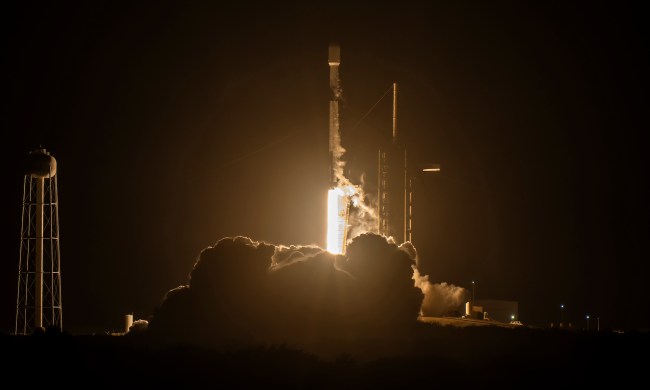Rocket builders need to conduct multiple static fire tests of their boosters before they can send them into space for the first time.
That means securing the vehicle to the ground before firing up one or more of its engines for anywhere between seconds and several minutes.
SpaceX has been testing the engines on its next-generation Starship spacecraft that will sit atop the mighty Super Heavy rocket when it takes its first orbital flight in the coming months.
While most videos of engine tests show the vehicle from the side, SpaceX decided to do things a little differently this time around by placing a camera directly above the Starship when it fired a single engine for about six seconds at its Starbase facility in Texas on Thursday. And we’re sure you’ll agree, the footage is pretty darn amazing.
Ship 24 completes a single-engine static fire test at Starbase in Texas pic.twitter.com/gF9beLcarX
— SpaceX (@SpaceX) December 15, 2022
We’re assuming the camera was attached to a drone flying overhead, though SpaceX doesn’t confirm this in its tweet sharing the video.
And just to give you some more perspective on what’s happening, here’s the same test from the usual angle.
STATIC FIRE! Ship 24 fires up as testing resumes for the test flight. Looked like a single engine firing.
➡️https://t.co/f5Sp0aaSMs pic.twitter.com/yaqGyeqa7X
— Chris Bergin – NSF (@NASASpaceflight) December 15, 2022
SpaceX chief Elon Musk also released some equally awesome footage a couple of months ago showing a static fire test of seven of the Super Heavy’s 33 Raptor engines.
7 engine static fire pic.twitter.com/sOm8Jx8rJq
— Elon Musk (@elonmusk) September 19, 2022
When the Super Heavy lifts off on its maiden test flight in the coming months, it will be the most powerful rocket ever to have launched. With 17 million pounds of thrust, that’s more than double that of the Saturn V rocket that propelled American astronauts to the moon five decades ago, and way more than the 8.8 million pounds of thrust exhibited by NASA’s new Space Launch System (SLS) rocket when it took its first flight in November as part of the Artemis I lunar mission.
The Super Heavy and Starship, which are collectively known as Starship, will be used by NASA to carry astronauts and supplies to the moon, and could even be deployed for the first crewed mission to Mars, possibly in the 2030s.
But before those missions, SpaceX is planning to use the Starship for the first civilian flight to the moon in the next few years. Japanese billionaire Yusaku Maezawa has already bought all the seats and selected his fellow passengers for the week-long adventure that will involve the spacecraft performing a flyby of our nearest neighbor before returning home.


